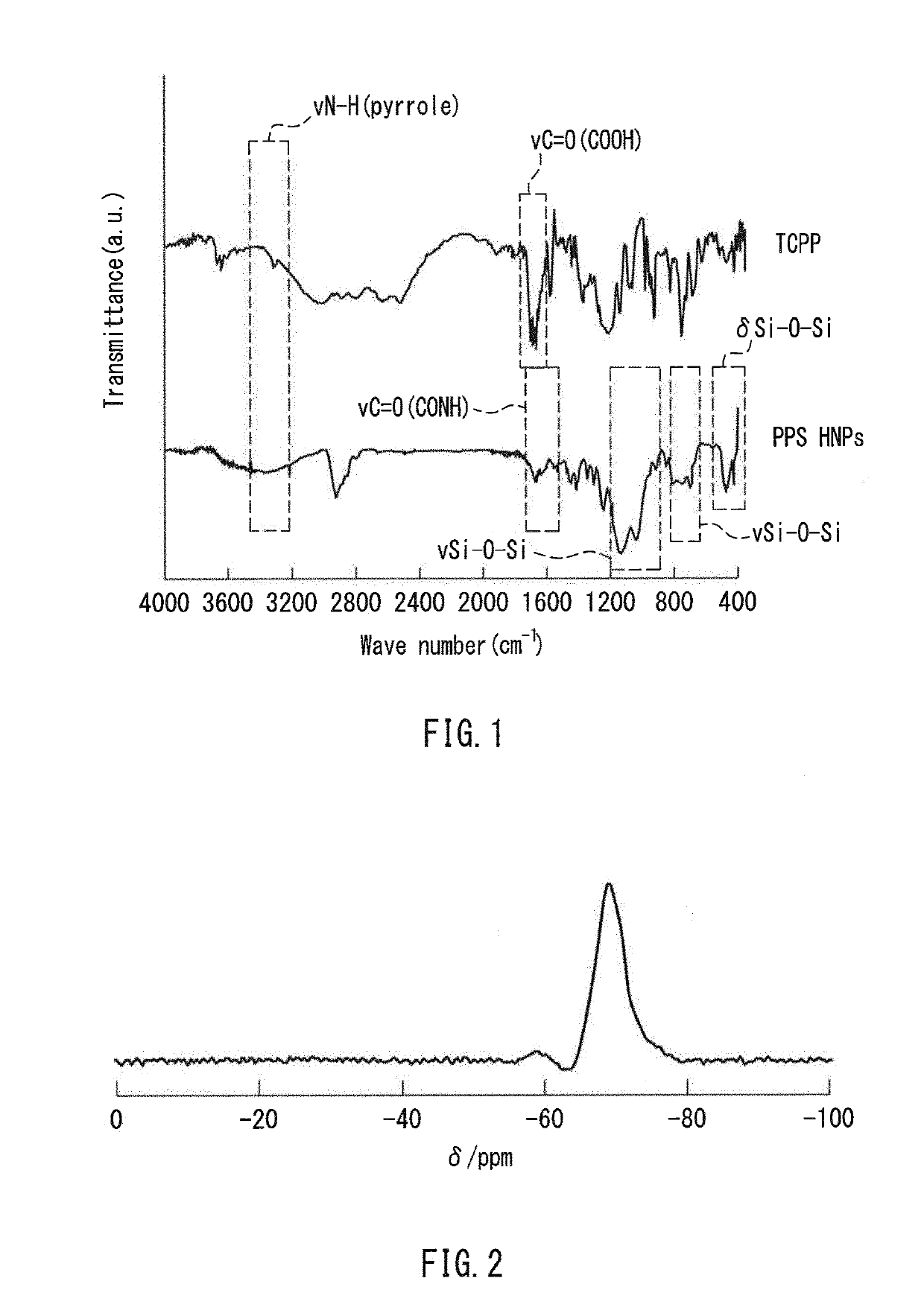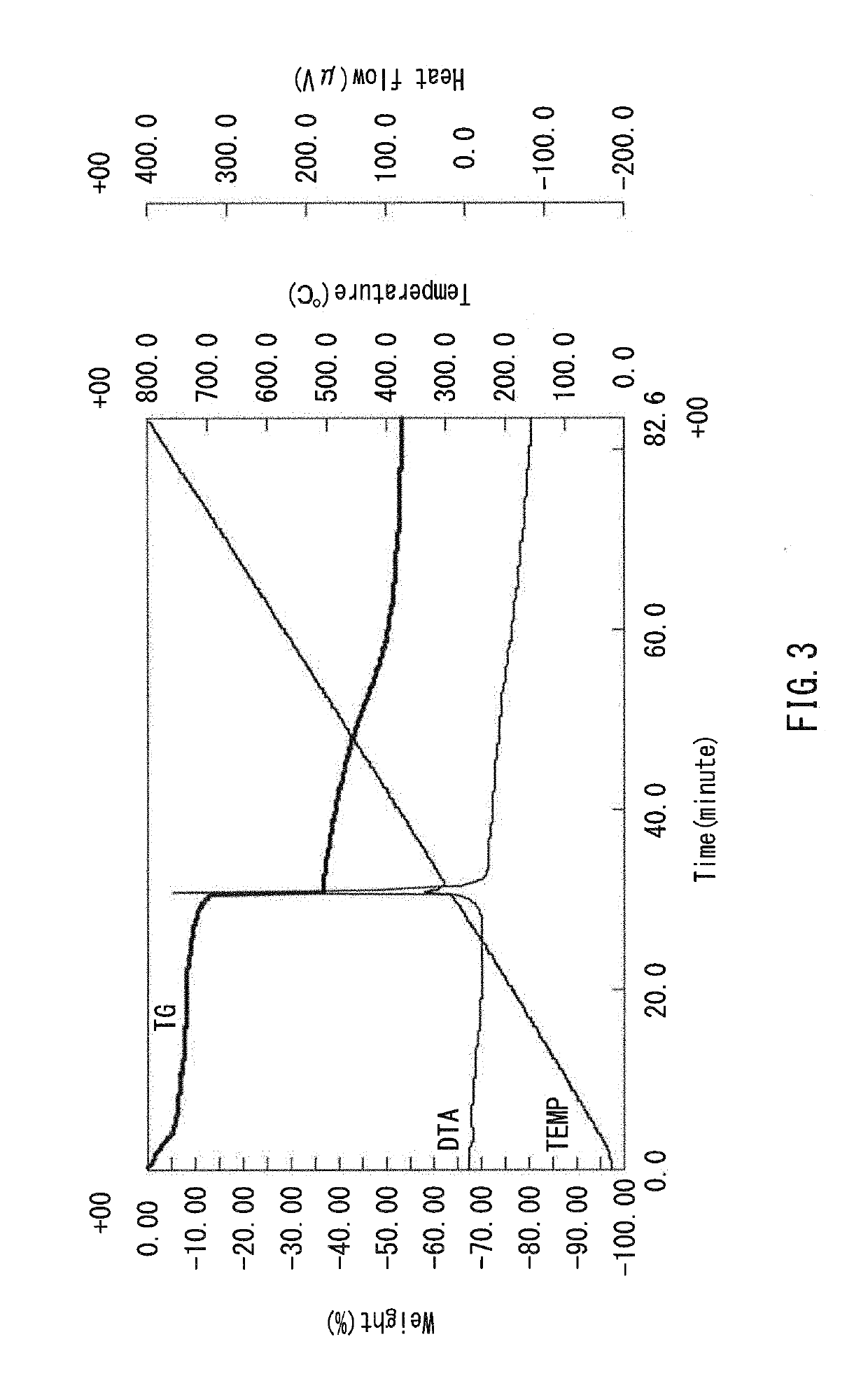Fluorescent probe, method for detecting fluorescence, and method for using fluorescent probe
a fluorescence probe and fluorescent probe technology, applied in the field of fluorescent probes, can solve problems such as the difficulty of observing fluorescence-labeled cells bound to near-infrared fluorescent probes in vitro
- Summary
- Abstract
- Description
- Claims
- Application Information
AI Technical Summary
Benefits of technology
Problems solved by technology
Method used
Image
Examples
example 1
[0092]Production of Fluorescent Probe
[0093]Production of Complex of Carrier Molecule and Fluorescent Dye a
[0094](1) APTES (462 μmol) was added to a DMF solution of TCPP (3.8 mM: 32 mL) obtained by dissolving TCPP in DMF, and then N,N′-dipropylcarbodiimide (480 μmol) and N-hydroxysuccinimide (480 μmol) were added thereto. The resultant mixture was stirred at 50° C. for 24 hours.
[0095](2) Next, 200 μL (porphyrin-silane: 0.75 μmol) of the DMF solution of porphyrin-silane obtained as described above was mixed with 5 μl (0.027 mmol) of MPTMS. To the obtained mixed solution, 500 μL of DMF and 300 μL of an aqueous solution of ammonia (concentration: 28 mass %, pH 11) were added, and a reaction was carried out at 80° C. for 24 hours.
[0096](3) After 24 hours, the product was collected as a precipitate through centrifugation (15000 rpm for 20 minutes). Then, the product was washed with water and ethanol several times, and was finally dispersed in 1 mL of water.
[0097](4) The obtained substance...
example 2
[0102]Production of Fluorescent Probe
[0103]Production of Complex of Carrier Molecule and Fluorescent Dye a
[0104]PPS HNPs was obtained in the same mariner as in Example 1.
[0105]Step of Binding Fluorescent Dye b and Cell Surface Binding Substance to Carrier Molecule
[0106](1) To 1 mL of the aqueous dispersion of the PPS HNPs obtained as described above, 251 μl of an aqueous solution of FA-PEG-Mal (concentration: 2 mg / mL, FA-PEG-Mal: 1.48×10−4 mmol) and 63 μl of an aqueous solution of ICG-Mal (concentration: 2 mg / mL, 1.48×10−4 mmol) were added. The resultant mixture was stirred at 30° C. for 3 hours.
[0107](2) After the reaction, the product was collected as a precipitate through centrifugation (15000 rpm for 20 minutes). Then, the product was washed with water several times, and was finally dispersed in 1 mL of water.
[0108](3) The obtained substance was a complex (fluorescent probe) in which the polysiloxane serves as a carrier molecule, the porphyrin serves as a fluorescent dye a, the ...
PUM
 Login to View More
Login to View More Abstract
Description
Claims
Application Information
 Login to View More
Login to View More - R&D
- Intellectual Property
- Life Sciences
- Materials
- Tech Scout
- Unparalleled Data Quality
- Higher Quality Content
- 60% Fewer Hallucinations
Browse by: Latest US Patents, China's latest patents, Technical Efficacy Thesaurus, Application Domain, Technology Topic, Popular Technical Reports.
© 2025 PatSnap. All rights reserved.Legal|Privacy policy|Modern Slavery Act Transparency Statement|Sitemap|About US| Contact US: help@patsnap.com



